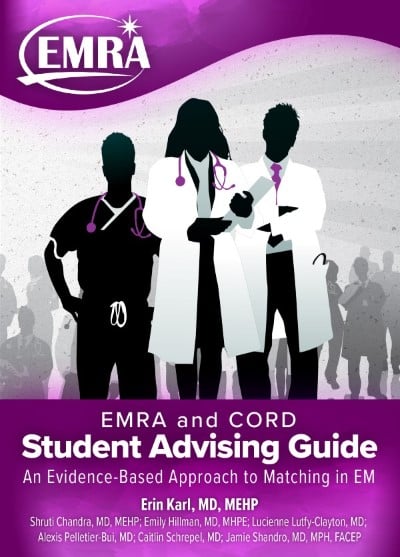Foreword
The landscape of medical education is changing. What does the data show to be effective for matching in emergency medicine? We’ve broken it down for you.
The landscape of medical education is changing. Core clerkships for many schools becoming pass/fail, the downfall of the Standardized Video Interview, the COVID-19 pandemic, USMLE Step 1 and COMLEX Level 1 becoming pass/ fail, program signals and geographic preferences being added to the ERAS application, an increase in the number of emergency medicine residency programs, and a significant number of EM positions being open in the SOAP — these are just some of the changes that have occurred to the EM residency application process since the first collaboration of the EMRA and CORD Student Advising Guide was published in 2019.
During these times of change, one thing remains constant and true — EMRA is here for you.
Throughout this guide, we want to continue to help you apply smarter, not harder. Our chapter authors are expert EM advisors, and our goal throughout this guide is to bring you evidence-based advice to help you position yourself for success.
Each chapter walks you through building a solid foundation throughout your preclinical and clinical years of medical school, succeeding on away rotations in EM, applying to residency, interviewing, and matching into EM.
We will help demystify the eSLOE, program signaling, geographic preferences, and how the NRMP Match algorithm works.
We will walk you through the NRMP Match data so you can be better informed on your likelihood of matching based on the number of programs you have on your rank list — you can then use this as a guide to help you better understand how many programs you should apply to in the first place.
Again, let us help you apply smarter, not harder.
We have also included targeted tips for osteopathic, IMG/FMG, military, and at-risk students, as well as those who are dual applying or couples matching. If you are a latecomer to EM, we have tips on how to quickly set yourself up for a successful match.
We hope this guide will help to make the process of matching into EM less daunting — from day one of medical school to Match Day.
If you haven’t heard this yet, you will hear it often: EM is a team environment. That is true of this book as well; we couldn’t have done it alone, and we want to share our gratitude.
- Thank you to our collaborators from CORD, who work so hard to support trainees on- and off-shift.
- Thank you to our chapter teams, who worked seamlessly to make sure this edition is current and helpful. They built on the words and wisdom of our previous edition, and we offer our thanks to those authors as well.
- Thank you to our medical student reviewers, whose input helped ensure our guidance is clear and thorough.
As always, we are here for you! If you have questions, please reach out.
Erin Karl, MD, MEHP
Editor-in-Chief
@ErinKarl_MD





